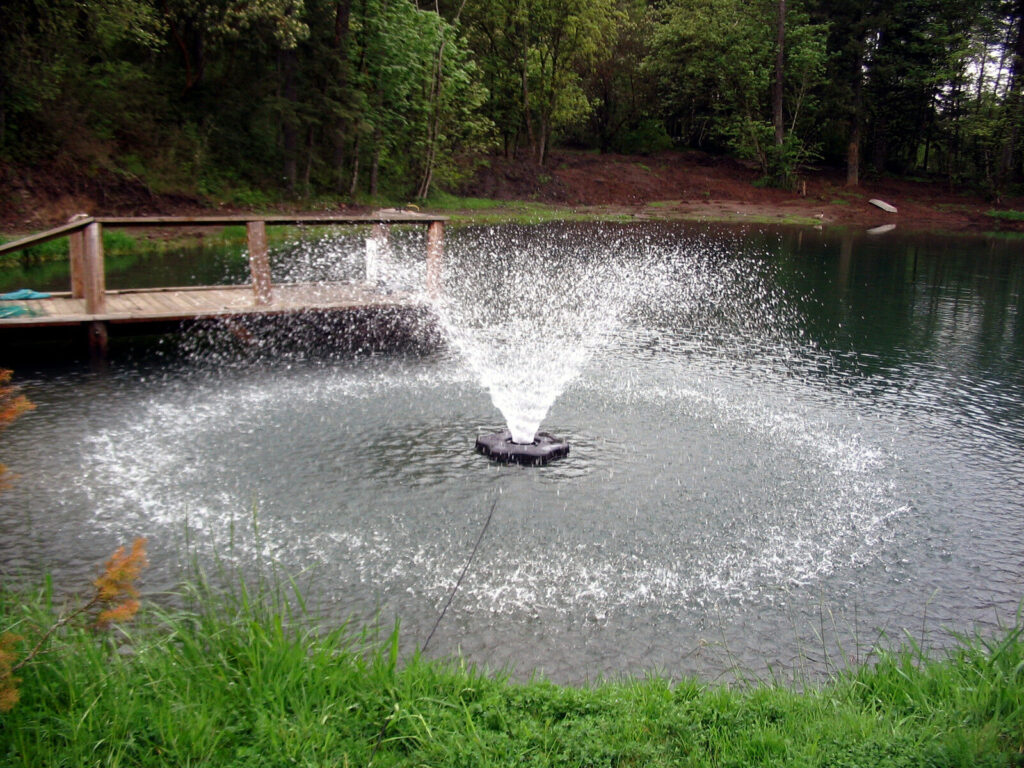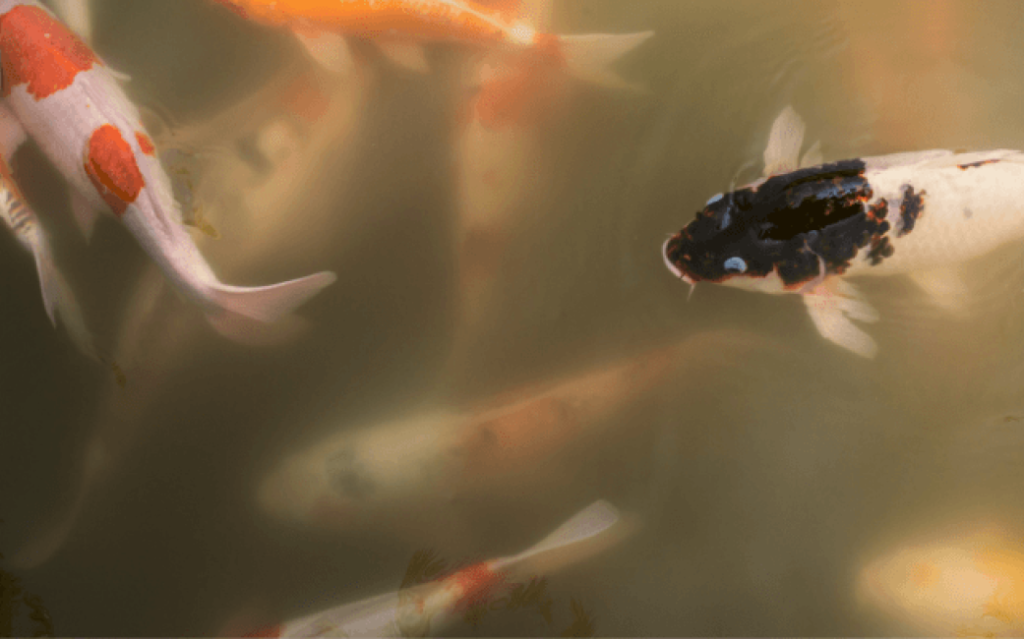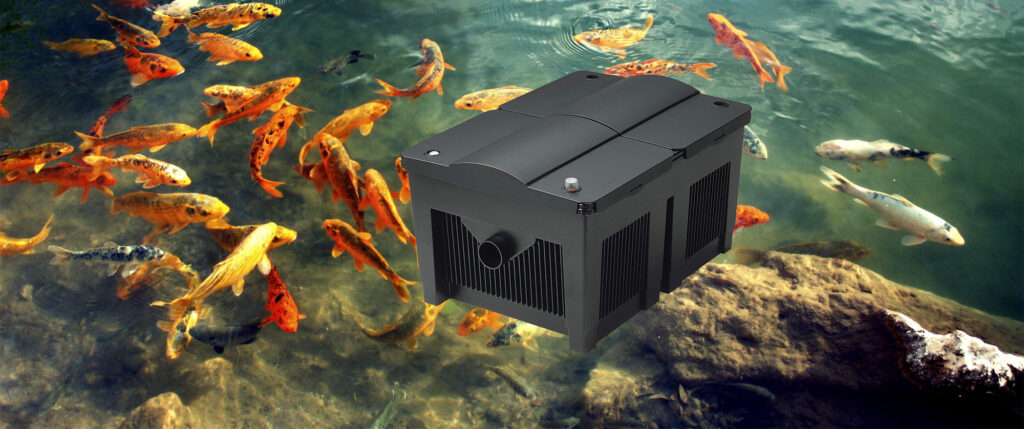
Draining your pond often is ill-advised. There is a delicate eco-system in that pond that will be disrupted if you do. Additionally, it’ll take quite a long time for this eco-system to recover after you’ve put in freshwater. That said, certain extreme circumstances will necessitate a pond draining exercise, and we will get into that in one of the sections of this writeup. If you come across any one of these circumstances, there are steps you can take to drain the pond quickly and efficiently. We will tell you how to do it right as well as the best practices while draining the pond. We will also notify you about the types of equipment that can help with the job.
As we mentioned above, it may be unavoidable for you to drain your pond. One example of a circumstance that may necessitate this course of action is when there is a tear in your pond liner. In that case, you’ll either need to repair it or replace it. Of course, you can’t do that with water in the pond.
Another circumstance is when you’re renovating your pound. You could also be redesigning it or upgrading it. Both will require you get rid of the water first before you can get started. Lastly, you may be unable to get rid of weeds and other disruptive lifeforms in your pond water. Consequently, the only viable recourse remains to drain the structure and rebuild the pond eco-system from scratch.
Before you resort to draining your pond, make sure there isn’t any other way to correct the issue.
The water may have lost its usefulness in the pond, but that doesn’t mean that it is completely useless. It contains lots of micro-organisms and nutrients that may be beneficial elsewhere. As such, dumping it in your sewerage system is probably not the best idea. Instead, you can dump it in your garden. The plants in the garden will thank you for this as they will receive nitrates and phosphates, which are two major components of fertilizers.
Your lawn could benefit just as much if you don’t have a garden. The same can be said of the trees and bushes you use for landscaping. If none of these is viable talk to someone who owns a farm and see if they can take the pond water off your hands.
Now that you have somewhere to dump the pond water, the next step is figuring out the logistics of draining the pond. There are several approaches to this that may work depending on your budget and the equipment you have at hand. They include using a submersible pump, solar pump, hand pump, a pond vacuum cleaner or that garden hose you have stashed away in your garage.
The submersible pump, solar pump, and vacuum cleaner are all pieces of equipment that many pond owners have at home. They can be essential in making sure the pond looks good and stays in tip-top shape. As it turns out, they can be instrumental in pond draining as well. If you don’t have any of these pieces of equipment and don’t plan on getting them, hand pumps and garden hoses are cheaper and more accessible.
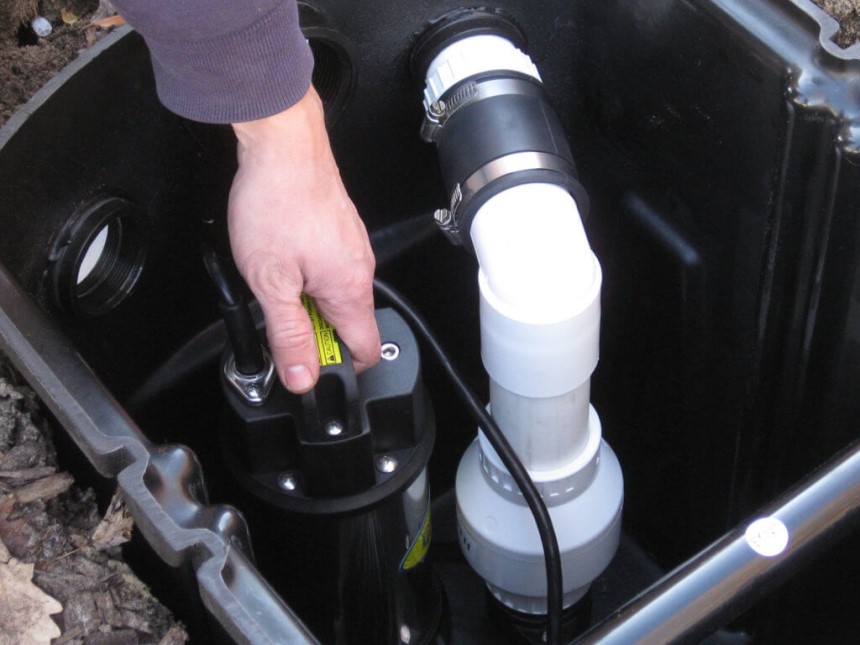
If this is the case, you won’t need to get any extra equipment to drain the pond. You can instead move the pipe attached to the outtake to your garden, and that will empty the pond. Reviewers seem rather impressed with the Tetra Pond Debris-Handling Pump and recommend it to anyone who doesn’t already own a submersible pump.
We are impressed with it as well as it is a low maintenance, energy-efficient device that also comes with a pre-cage filter to keep debris out of the impeller. It can also work 24/7 and will likely keep your pond aerated without any hiccups.
Notably, deeper ponds will need more powerful submersible pumps. That said, you only need to confirm the “head height” of the machine, and that will tell you how far the pump will move the pond water before it starts to lose power. This information is freely available in your pump manual and on vendor sites where you’ll be purchasing the machine.
External pond pumps also have their upsides and can do an excellent job of draining the pond. They are especially effective for larger ponds that submersible pumps can’t handle. Remember to position the intake pipe at the deepest part of the pond and the outtake where you intend to dump the water.
You should know that running either a submersible or external pond pump can get quite expensive since they rely on electricity. You’ll thus have to pay a higher utility bill.
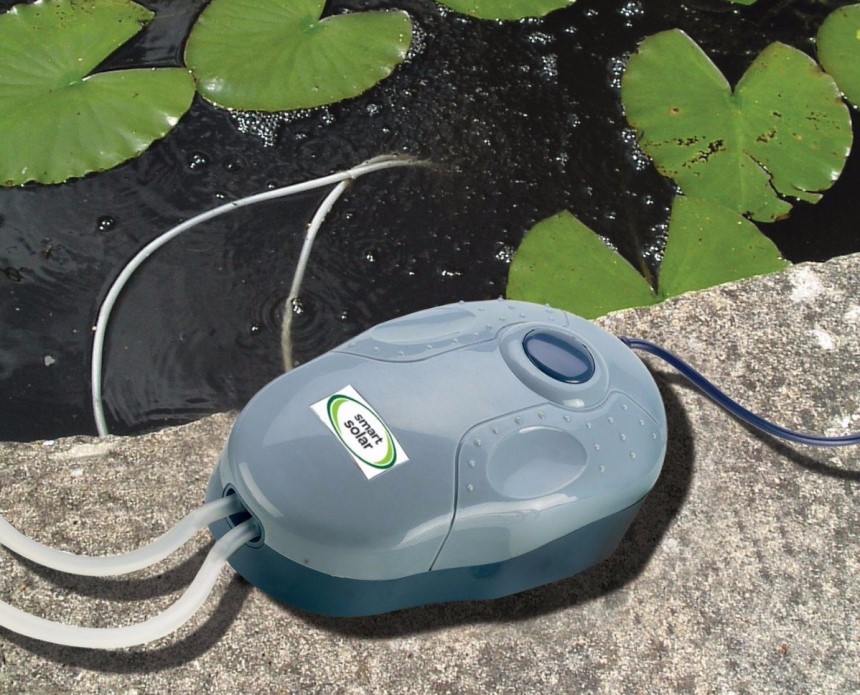
You can use the solar pump in the summer where long periods of sunlight are to be expected. Notably, the ideal flow rate for a solar pump used for draining a garden pond is between 200 and 500 GPH. The head height also comes into play here. Just as is the case with submersible pumps, the higher the head height of the machine, the better.
Also, if the pond is positioned a good distance away from any electric sockets, the solar pump will still be able to get the job done. Notably, there aren’t any rules against using the solar pump for large ponds. However, if you opt to give it a go, your patience will be heavily tested.
Remember that solar pumps don’t work at night, and as such, you can’t expect to find an empty pond in the morning.
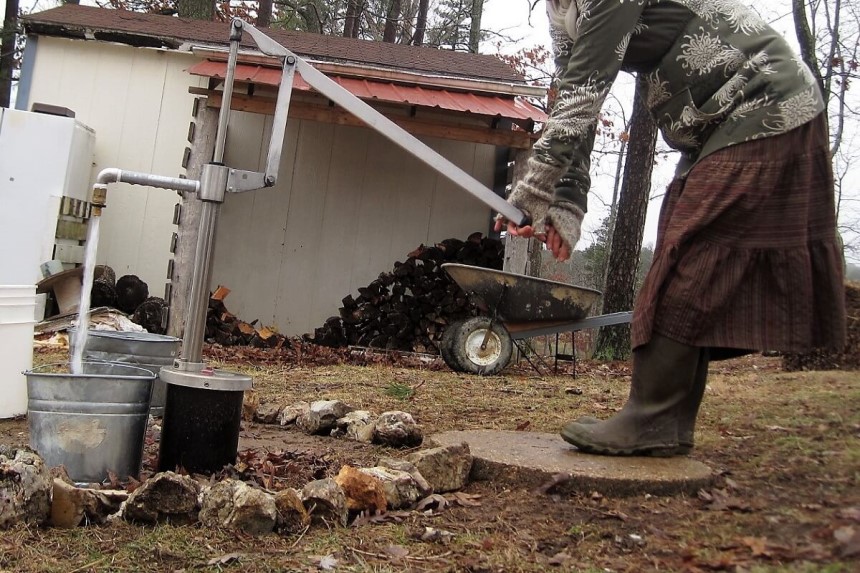
You may need to get a larger hose to take full advantage of the 5-10 gallons per minute flow rate of the hand pump. As such, since most ponds have a capacity of a few thousand gallons of water, it will be a tall order to finish the task within a day unless you’re incredibly athletic.
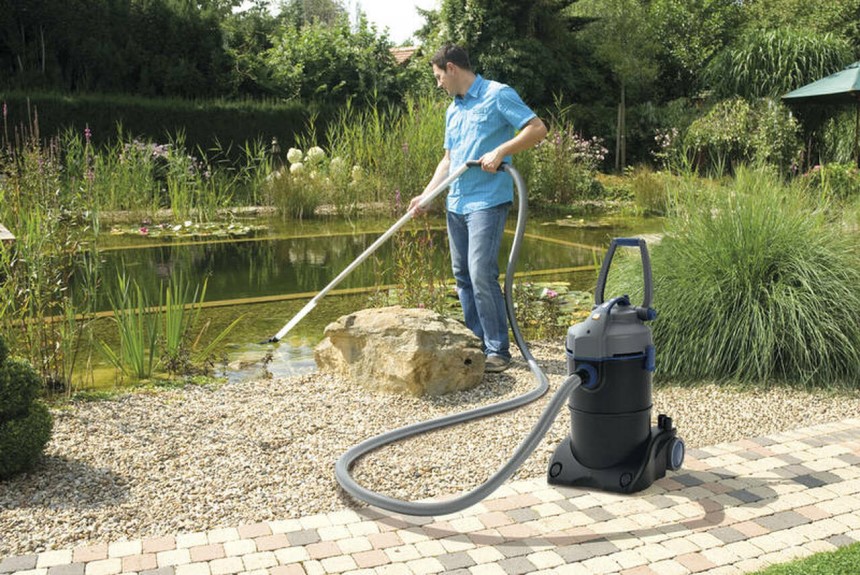
Another difference is the flow rate. Notably, that will depend entirely on the size of the motor in the cleaner. A highly recommended product for cleaning the pond and draining the water when you need to is the OASE 032232 vacuum cleaner. The 1300 GPH flow rate of the machine even beats that of cheaper submersible pond pumps. Notably, the 16ft suction hose length and the 8ft discharge hose length of the vacuum cleaner will be handy when dumping the water in your garden.
The last and most affordable way to get water out of a pond is to use a garden hose to siphon the pond’s contents. Unless you have a few weeks to waste, you shouldn’t try using a garden hose to drain a large pond. Even if yours has a hand pump, the maximum flow rate that it can achieve is about 10 gallons per minute.
Notably, for the garden hose to work as a draining method, the pond has to be elevated in comparison to where you’re dumping the water. This includes even the deepest parts of the pond. If this is condition is met, you’ll need a working faucet and a nozzle on one end of the garden hose.
Ensure the length of the hose is enough to reach the garden or your preferred dumping site. Start by positioning one end of the hose in the deep end of your pond. Use something solid and relatively heavy to hold this end of the hose in place. You don’t want it to move as that may interfere with its siphoning capabilities.
Connect the other end of the hose to the faucet and turn it on. Notably, you want the entire garden hose to fill up with water as this eliminates air pockets in the pipe. If the pond is compact enough, you will see air bubbles come up to the surface of the water right up to the moment the hose fills up.
However, you may not see the bubbles for some ponds, and it becomes impossible to say for sure whether the hose is full or not. If this is the case, give the hose sufficient time to fill up, then proceed to the next steps.
Turn off the water faucet and detach the nozzle. Make sure to hold the nozzle upright so that no water is spilling out. Walk to the dumping area while dragging the hose behind you and dump it on the ground. After a few seconds, water should start trickling out and continue to do so until the pond is empty.
Due to the relatively large sizes of most garden and fish ponds, you’ll waste a lot of time if you decide to sit there and wait for the pond to be empty. Instead, you should go about your other daily activities. That said, you should check on pond draining progress periodically just in case the hose stops siphoning the water.
Alternatively, siphon pumps that are compatible with your garden hose are not that expensive to obtain. You can even get some for less than 10$. It will take you a few minutes to siphon the water from the pond to the outtake. Once the water starts flowing consistently, you won’t even need the pump anymore.
You don’t just leave your pond empty after draining it out. Instead, you clean it, redesign or renovate it and then fill it up with water again. If you have fish, you’ll want to reintroduce them to the fresh pond as well. Notably, refilling your pond the wrong way could make it uninhabitable for the fish and lead to their deaths. As such, here are the dos and don’ts of refilling your pond.
You can use regular tap water to fill up the pond. Use a garden hose if that is what you have available.
Use a dechlorinater on the pond water and wait for it to function. It may take several days, but your fish will be safer for it. Our experts recommend the TetraPond AquaSafe as it is quite effective at getting rid of both chlorine and chloramine. It also binds and detoxifies heavy metals in the water to make them safer for fish.
Additionally, don’t just introduce the fish based on faith that the declorinater has done its job. Test the water quality just to make sure. Once the pond has been deemed safe by a pond water test kit, the fish can be brought back.
The chlorine may have killed off most of the beneficial micro-organisms that once called your pond home. These are an essential part of the pond eco-system and will likely take forever to repopulate. Nevertheless, you can speeds things up by adding some bacteria that are available in stores.
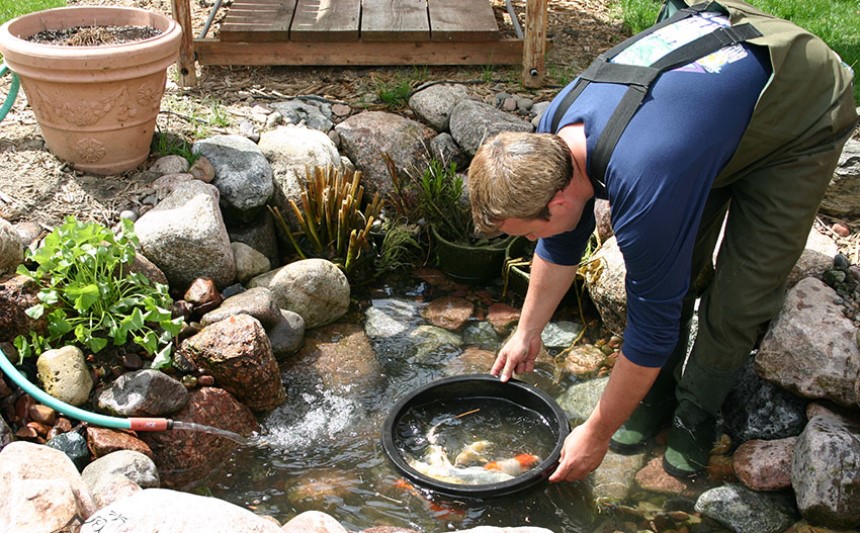 Final thoughts
Final thoughtsNo matter the size, draining that pond of quarter, half or all of its contents isn’t as daunting as you made it out to be in your head. You can use advanced equipment such as pond vacuum cleaners, submersible pumps, solar pumps and even external pumps in rare cases. These will finish draining the pond for you in a relatively short time but might be expensive for some.
Cheaper alternatives are also available such as the hand pump, and garden hose. Pond draining with these options might take longer, though your pockets and bank account might thank you later. Also, pay particular attention to the refilling process as you want your fish to stay healthy and live long lives. If you still have questions you feel went unanswered in the writeup above please ask them in the comments section below.
